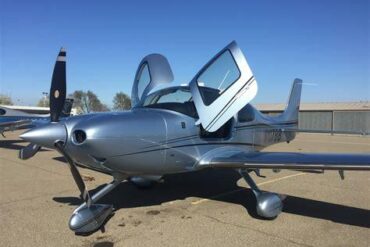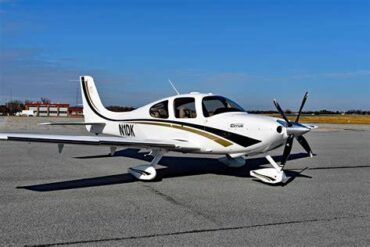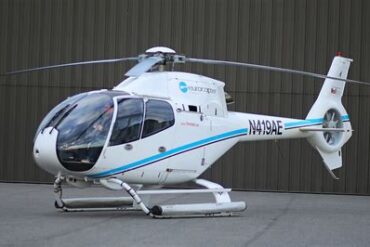The Cirrus SR22-G6 is one of the most popular high-performance single-engine aircraft on the market today. Known for its sleek design, advanced avionics, and superior safety features, the SR22-G6 offers an excellent blend of luxury and performance. However, before considering the purchase of this remarkable aircraft, it is essential to understand the price and operating costs associated with it. This article provides an in-depth look at the costs involved in owning and operating a Cirrus SR22-G6, from purchase price to maintenance expenses, insurance, fuel costs, and more.
1. Understanding the Purchase Price of the Cirrus SR22-G6
The purchase price of a Cirrus SR22-G6 varies significantly based on several factors, including the model year, optional features, and market demand. As of the latest data, the average base price for a new Cirrus SR22-G6 typically starts around $800,000. This price can escalate significantly with the addition of various upgrades and options that enhance the aircraft’s performance and comfort.
1.1 New vs. Used Models
When considering the SR22-G6, buyers have the option to purchase either new or used models. New aircraft come equipped with the latest technology and warranty coverage, but they also demand a higher price tag. Conversely, used SR22-G6 models can be found at lower prices, ranging from $500,000 to $700,000, depending on their age, condition, and installed options. It’s crucial to assess the aircraft’s maintenance history and airworthiness before making a purchase.
2. Financing Options for the Cirrus SR22-G6
Financing the purchase of a Cirrus SR22-G6 can be accomplished through various channels, including banks, credit unions, and specialized aviation financing companies. Typically, lenders require a down payment ranging from 10% to 20% of the purchase price. Monthly payments will depend on the interest rate, loan term, and total loan amount. For example, a $800,000 loan with a 4% interest rate over a 15-year term would result in monthly payments of approximately $5,900.
3. Operating Costs of the Cirrus SR22-G6
Owning a Cirrus SR22-G6 comes with recurring operating costs that must be considered in the overall budget. These costs can vary based on flight frequency, pilot experience, and specific operational needs. The primary components of operating costs include:
3.1 Fuel Costs
Fuel is one of the most significant ongoing expenses for aircraft owners. The SR22-G6 typically uses 100LL Avgas or Jet A fuel, depending on the engine configuration. On average, the fuel consumption is around 14 to 16 gallons per hour during cruise flight, which can lead to estimated annual fuel costs ranging from $20,000 to $30,000, based on flight hours and fuel prices.
3.2 Insurance Costs
Insurance is a crucial consideration for aircraft ownership, protecting against potential liabilities and damages. The cost of insuring a Cirrus SR22-G6 varies based on factors such as pilot experience, flight history, and coverage limits. Generally, annual insurance premiums range from $1,500 to $4,000. Higher rates may apply to owners with less experience or those who frequently fly in more challenging conditions.
3.3 Maintenance and Repairs
Regular maintenance is essential for ensuring the safety and performance of the SR22-G6. Owners should budget for routine inspections, servicing, and potential repairs. The FAA requires a 50-hour and 100-hour inspection schedule, with annual inspections mandated. The average maintenance cost per flight hour is estimated to be around $100 to $200, leading to annual maintenance costs of approximately $10,000 to $20,000.
3.4 Hangar Fees
Storing the aircraft in a hangar can protect it from the elements and enhance security. Hangar fees vary widely based on location and facility type. On average, owners can expect to pay between $300 to $1,200 per month, resulting in annual costs ranging from $3,600 to $14,400.
3.5 Miscellaneous Operating Costs
In addition to the major operating costs, several miscellaneous expenses should also be factored in, including:
-
Pilot training and proficiency: Continuous training is crucial for maintaining skills, costing approximately $2,000 to $5,000 annually.
-
Navigation charts and subscriptions: Regular updates can add up to $500 per year.
-
Safety equipment and upgrades: Budget for any necessary upgrades or replacements, which can vary widely.
4. Cost-Benefit Analysis of Owning a Cirrus SR22-G6
Owning a Cirrus SR22-G6 presents various advantages and disadvantages that should be carefully considered. On one hand, the aircraft offers excellent performance, cutting-edge technology, and unmatched safety features. On the other hand, the associated costs can be substantial. A detailed cost-benefit analysis can help prospective buyers make an informed decision.
4.1 Benefits of Ownership
-
Convenience: Owners have the freedom to fly on their schedules without the limitations of commercial airlines.
-
Access to Remote Locations: The SR22-G6 can access smaller airports, making travel to remote destinations easier.
-
Comfort and Luxury: The cabin is designed for comfort, offering a premium flying experience.
4.2 Drawbacks of Ownership
-
High Operating Costs: The ongoing costs can be significant, impacting overall financial stability.
-
Depreciation: Like most vehicles, aircraft depreciate in value, which could impact resale potential.
-
Regulatory Compliance: Owners must navigate various regulations and requirements, which can be time-consuming.
5. Conclusion
In conclusion, owning a Cirrus SR22-G6 is a rewarding endeavor for those who value performance, safety, and convenience in aviation. However, it is essential to weigh the substantial purchase and operating costs against the benefits of ownership. By understanding the various financial implications, prospective buyers can make a well-informed decision that aligns with their aviation goals.
Overall, the Cirrus SR22-G6 remains a top choice for aviation enthusiasts and professionals alike, combining state-of-the-art technology with a luxurious flying experience. As you embark on your journey toward aircraft ownership, ensure that you conduct thorough research and consult with aviation experts to make the best possible choices for your flying future.


















